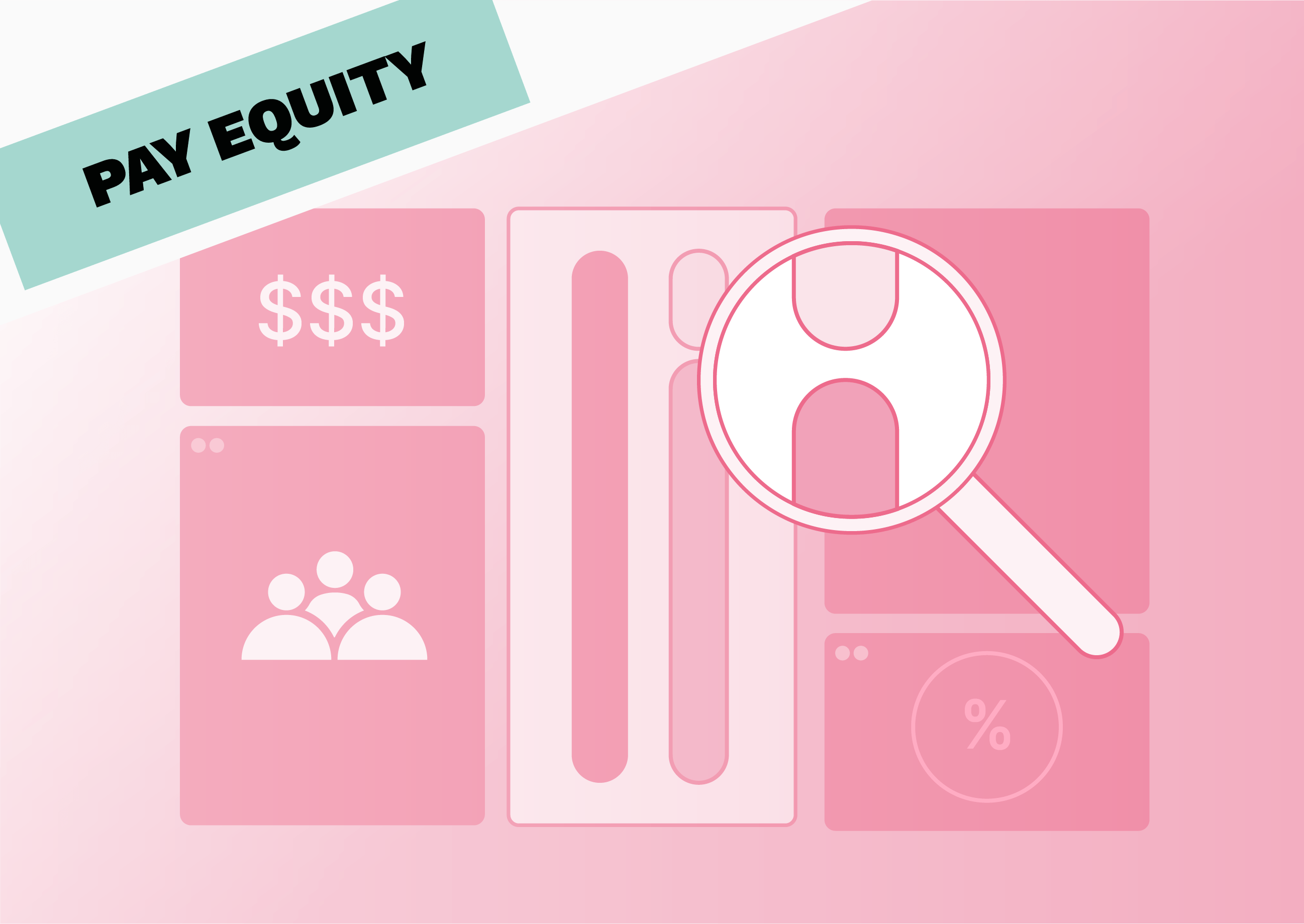Key points:
- Six data disasters derail projects: Currency harmonisation, allowance mapping, demographic standardisation, hierarchy reconciliation, date formatting, and scope definition must be solved before any meaningful analysis begins.
- European compliance deadline approaching: The 2026 EU Pay Transparency Directive requires companies to prove gender pay gaps stay under 5%, triggering mandatory reporting for violations.
- Subscription beats consulting: Modern software (€2,500+/year) delivers always-current insights versus outdated annual consultant reports (€15,000-25,000) that become irrelevant immediately.
Want to know some worrying news?
Despite new EU laws demanding fair pay, pay gaps are actually getting worse, not better. Companies across Europe are scrambling to meet the 2026 Pay Transparency Directive requirements, yet many are making the same expensive mistakes.
So don’t be surprised if your CEO forwards you the EU directive email with a simple question that makes your stomach drop: "Are we compliant with the 5% threshold?"
You know the drill. Open Excel. Export messy HRIS data. Scream existentially as you question the nature of being an HR representative. Then, finally, produce a number that might be right… or might land you in regulatory hot water.
There's a better way.
Companies successfully navigating EU compliance aren't relying on spreadsheets or expensive consultant audits. They've discovered that the right pay equity software can completely remove the stress of pay equity analysis by crunching the numbers and delivering board-ready results.
And in this guide, we'll be providing you with some of the best pay equity tools that can make analysis a cakewalk. Let’s go.
What is pay equity software?
Pay equity software is a type of technology that identifies demographic-based salary gaps while maintaining regulatory audit trails. These tools automatically detect unfair pay differences between employees doing similar work, helping you fix disparities before they become compliance headaches.
The benefits are straightforward:
- Meet legal obligations – Satisfy EU directive requirements and avoid regulatory penalties.
- Build employee trust – Transparent pay practices boost retention and workplace confidence.
- Protect your reputation – Proactive equity management prevents damaging headlines.
Fact is, without purpose-built tools, pay gap analysis becomes a months-long Excel nightmare prone to costly errors. Smart software automates this process, turning complex statistical analysis into clear, actionable insights.
We hear you sighing with relief from here, thinking all your problems are solved. Well… we’re going to have to drag you, kicking and screaming, back to reality. Pay equity software can be wonderful, but it’s only as good as the companies (and numbers!) behind it. Let’s show you what we mean.
The six data transformations required before any analysis begins
The actual pay gap analysis is actually a small part of the whole process. In reality, the majority of project time goes to data preparation, not statistical analysis. This can impact the time you spend on software implementation.
So what does that include? Let’s take a look at the six data transformations that determine whether its pay equity project succeeds.
Hopefully, we’ve demonstrated just how messy the prep for pay equity analysis can be. The problem is, if your numbers are faulty, your analysis will be no better. And this is where we circle back to pay equity software.
If you feed your software with bad numbers, it’s not going to fix it for you. It’s not HAL 9000 (thankfully), and it won’t be able to infer EU law to figure out what data is applicable and which isn’t. You’ll still have to do some hard work, but your workload will be significantly lighter with pay equity software to assist you.
Top 5 pay equity tools for European organisations
1. Figures

Figures is a pay equity platform that combines internal gap analysis with external market benchmarking data in one interface. This unique approach lets you instantly see whether pay disparities reflect internal inequity or competitive market positioning across European markets.
Strengths: 20+ European HRIS connectors, certified in SOC 2 Type 2 and ISO 27001, pre-filled EU compliance templates, includes market benchmarking data (3.5M+ data points powered by Mercer), designed for HR users, not statisticians.
Weaknesses: Newer player, primarily European-focused, not for small companies under 150 employees.
Implementation: Adapts to your company’s timeline and needs, but the typical time is between 2-4 weeks.
Best for: Fast-growing European companies with 250-5000 employees.
2. PayAnalytics

PayAnalytics specialises in "equal pay for work of equal value" analysis using sophisticated job evaluation methodology. Its standout feature is multivariate regression analysis that identifies specific factors influencing pay differences.
Strengths: Acquired by beqom (adding enterprise credibility), designed for minimal setup with video tutorials, supports equal pay for work of equal value methodology, available in seven languages with multi-currency support.
Weaknesses: Can be expensive for small businesses, learning curve for new users, and customer service can be slow.
Implementation: 4-6 weeks with data preparation included. They do allow for simple implementation, which isn’t as data-intensive, allowing you to run your first analysis in a couple of hours.
Best for: Global organisations needing multi-country analysis with over 90 countries supported.
3. Pihr

Pihr focuses exclusively on rapid compliance delivery with its automated analysis engine. Its key differentiator is speed – the platform promises to make organisations "compliant in minutes" with automated salary disparity identification and cost calculations for recommended adjustments.
Strengths: Used in 90+ countries, available in 5 languages, GDPR compliant, saves up to 90% of manual audit time, unlimited users per account.
Weaknesses: Swedish-founded with Nordic focus, smaller company (founded 2012).
Implementation: Minutes to become compliant with automated analysis.
Best for: Organisations focused on gender pay gap closure with 500+ clients globally.
4. Syndio

Syndio offers enterprise-grade statistical rigour with attorney-client privilege protection for legal defensibility. Its "Compensation Consistency Analysis" feature identifies all pay inconsistencies across the workforce, while supporting intersectional analysis for complex demographic overlaps.
Strengths: Capabilities verified by legal experts, attorney-client privilege workflow, intersectional analysis, and root cause identification.
Weaknesses: Primarily US-focused despite EU capabilities.
Pricing: Similar to most platforms, they don’t outright list their pricing and instead craft custom plans depending on company size and requirements.
Implementation: 4-6 weeks, including training and data migration.
Best for: Large enterprises requiring legal defensibility and sophisticated statistical analysis.
5. Trusaic PayParity

Trusaic provides a comprehensive compliance-first pay equity analysis designed specifically for large multinational employers. Its distinctive feature is "Salary Range Finder" technology that prevents future pay inequities by providing real-time guidance during hiring, promotions, and compensation decisions.
Strengths: SOC 2 certified, integrates with major HRIS (Workday, SAP, UKG, ADP), designed for Fortune 100 companies, addresses multiple protected characteristics.
Weaknesses: Primarily US-focused with limited European templates, enterprise-only pricing.
Pricing: Custom enterprise pricing (typically $20,000+ annually).
Implementation: 8-12 weeks for full deployment.
Best for: Large multinational employers requiring comprehensive compliance across multiple jurisdictions.
How to choose the right pay equity tool for you
Selecting pay equity software shouldn't feel like you’re trying to read ancient Sumerian. Yet many vendors make it unnecessarily complex with buzzwords and hidden costs. Here's how to cut through the noise.
🚩Red flags when evaluating:
- No transparent pricing suggests complex implementation with surprise consultant fees.
- "AI-powered insights" without practical examples. What exactly does the AI do beyond basic regression analysis?
- No mention of data preparation time. If they skip this topic, expect months of cleanup work.
- Generic global templates instead of country-specific compliance forms for France, Germany, and the Netherlands.
- Requires consultants to operate. You'll never achieve self-service capability.
Making your decision
Location is an important factor when choosing your pay equity software.
For instance, European organisations with 250-5000 employees consistently find better ROI with mid-market solutions (Figures, PayAnalytics, Pihr) than enterprise platforms designed for Fortune 500 complexity, you might find in the US.
This is where specialised European tools make the difference.
If you're prioritising HRIS compatibility, speed to value, and user-friendly implementation, Figures addresses the six data transformation disasters that kill most projects:
- Pre-built HRIS integrations eliminate manual exports through automated data mapping that understands European payroll structures.
- European compliance specialist with report templates pre-aligned to the upcoming 2026 legal standards.
- Government-ready outputs that submit directly to regulatory portals without reformatting.
- Smart gap identification, distinguishing justified differences (experience, location) from actionable disparities.
- Guided interface where you define business rules through dropdown menus, not Excel formulas.
Unlike other tools that are simply adapted for European use, Figures was built specifically to meet European compliance requirements. The platform combines pay equity analysis with market benchmarking data, meaning you can instantly see if gaps reflect internal inequity or competitive market positioning.

Plus, let’s consider your implementation timeline:
- Traditional consulting approach: 12-16 weeks of data wrestling.
- Enterprise software: 8-12 weeks with consultant dependency.
- European specialist tools: 2-4 weeks to actionable insights.
HR departments are already swamped with work, and complicated implementation can really amp up the stress levels… and it’s unlikely a pizza party will be enough to alleviate the pressure. Take the path of least resistance; choose a platform that’s already optimised for your location.
From annual panic to monthly confidence with Figures
Companies with dedicated data teams still struggle with pay equity chaos. The right HRIS connectors transform weeks of Excel detective work into days of strategic analysis.
The old model is broken. Pay €15,000-25,000 for an annual consultant report that's outdated the moment someone gets promoted or changes roles. Compare that to €2,500+/year for dashboards that update automatically with your HRIS changes… not to mention you can actually understand them without a statistics degree.
You stop being a "data janitor" wrestling with pivot tables at midnight and become the strategic advisor who can answer your CEO's compliance questions instantly. Especially when you’ve got the right software backing you up.
Modern pay equity software succeeds on four fundamentals that eliminate the traditional headaches:
- Pre-built HRIS integrations eliminate manual exports and the inevitable formatting disasters that follow.
- EU-compliant templates arrive pre-formatted for regulatory submission – no reformatting required.
- Clear justified vs. unjustified gap identification distinguishes legitimate differences (seniority, location) from actionable disparities.
- Guided interface replaces spreadsheet complexity with intuitive workflows that anyone can navigate.
That CEO compliance email? Answered in minutes now! Companies stuck in Excel spend months discovering what specialised software solves in days.
Book a demo to see exactly what we mean and start performing pay equity audits with confidence.
{{ cta }}
Summarize this article with AI
No time to read it all? Get a clear, structured, and actionable summary in one click.






